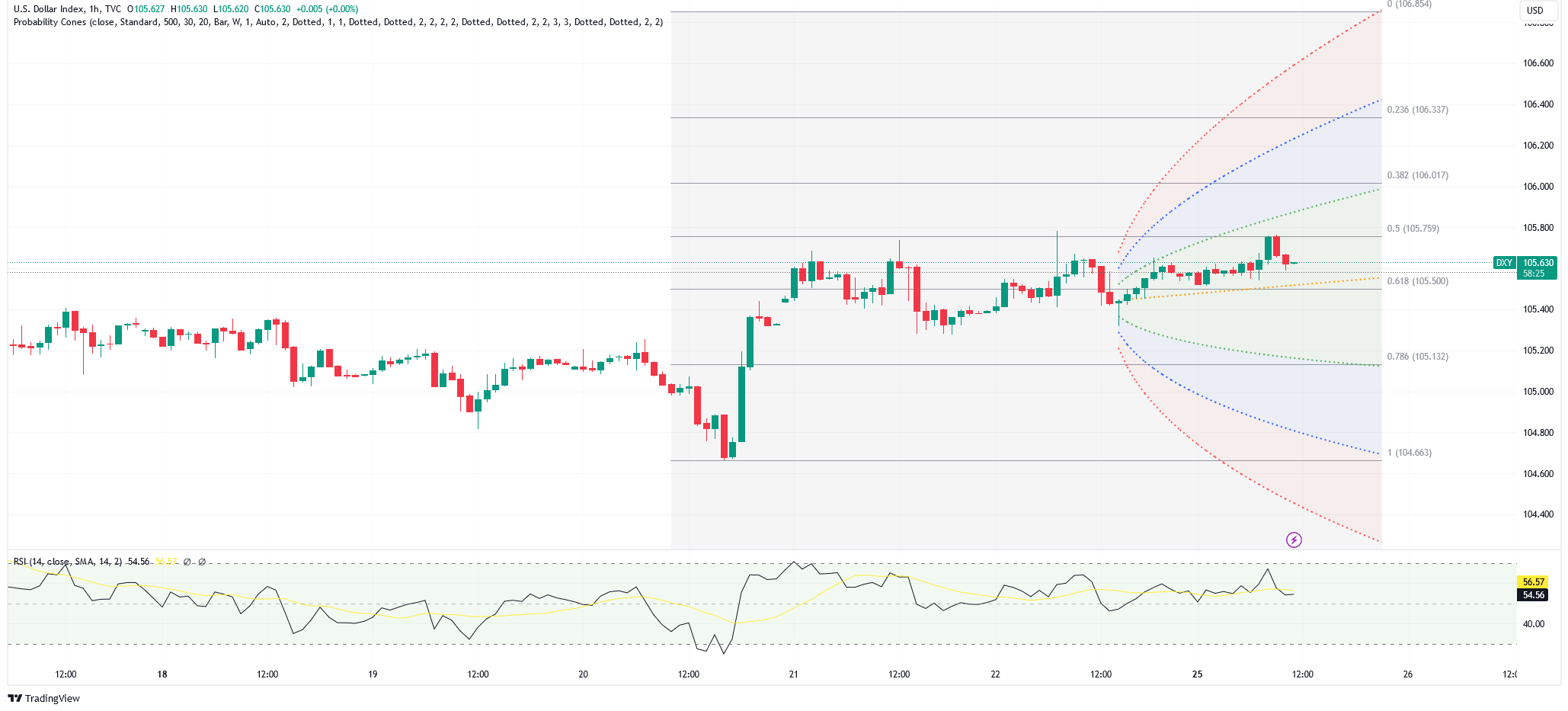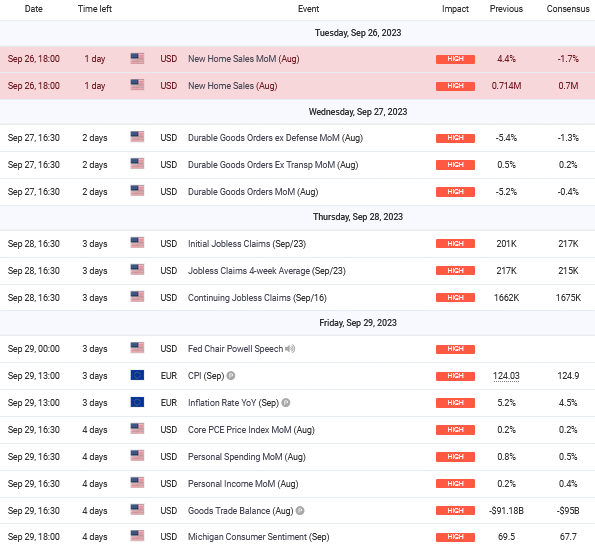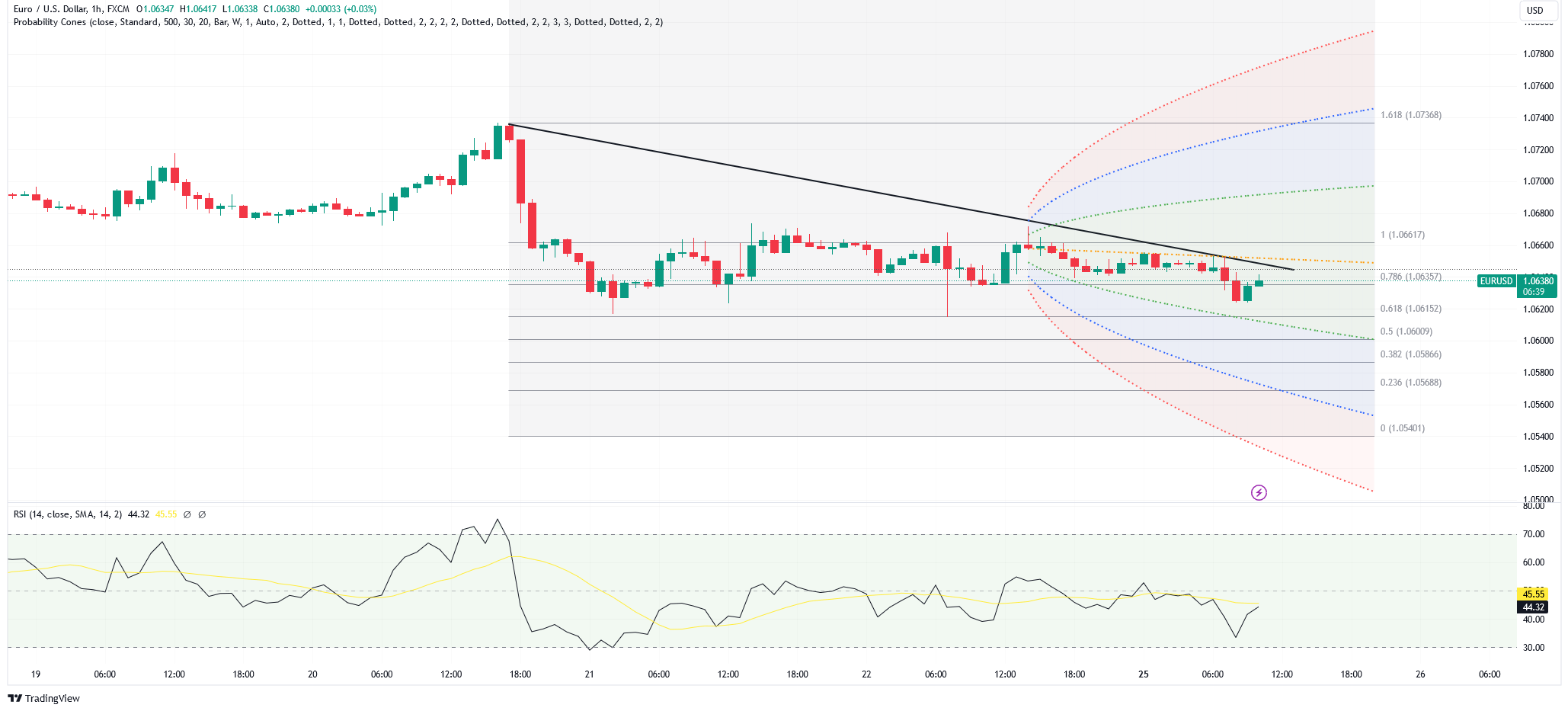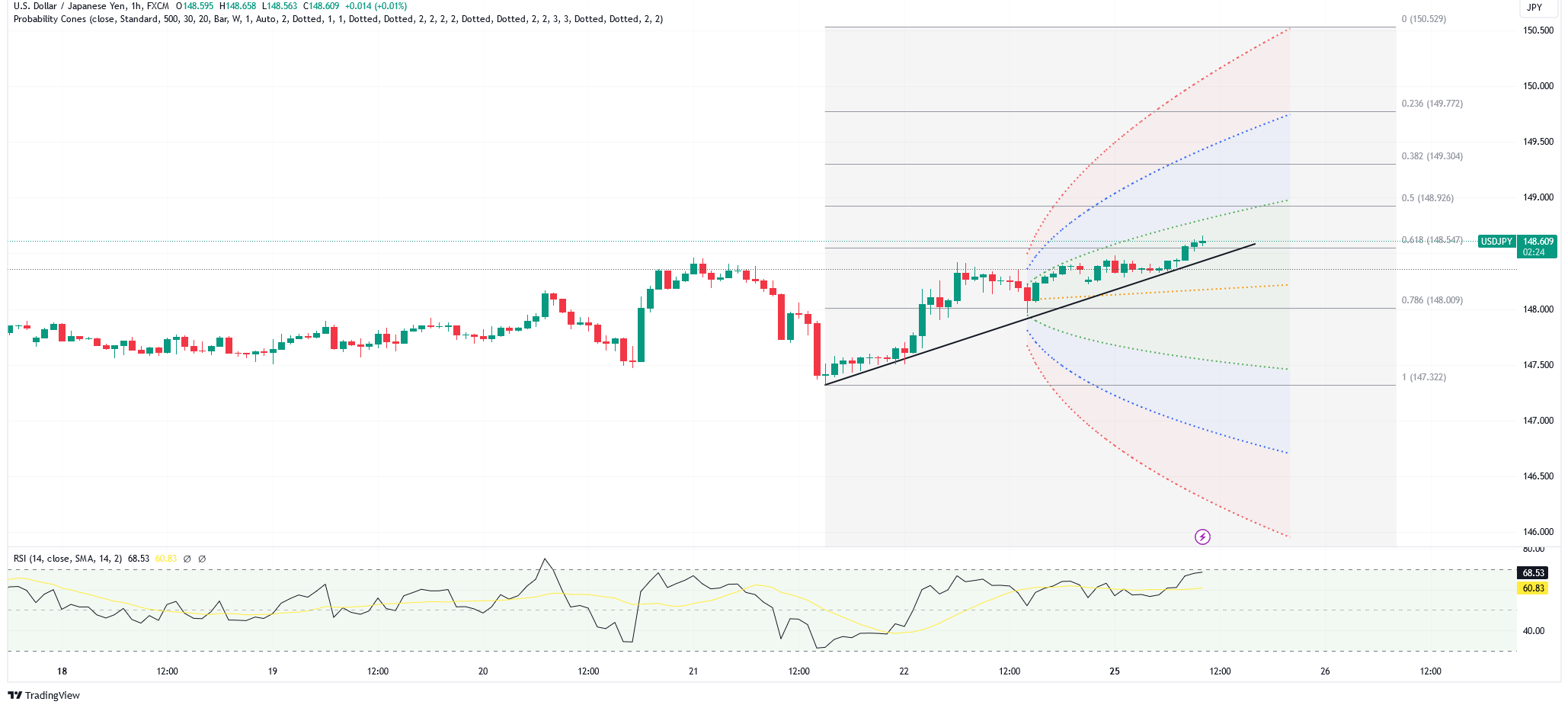
Dollar Index:
As of September 25, 2023, the latest news on the USD Dollar indicates that it has risen against the yen to an almost 11-month high, keeping traders focused on Japan’s intervention risks.
This comes after the Bank of Japan and Governor Kazuo Ueda quashed hopes of any imminent move away from its ultra-loose monetary policy. The Federal Reserve also surprised markets by signaling that U.S. rates would need to stay higher for longer than initially expected. The dollar index, which touched an over six-month high on Friday, firmed at 105.64.

In other economic news, the Indian rupee is likely to weaken on Monday as elevated U.S. Treasury yields have kept the dollar well supported against its major peers and emerging market currencies. The dollar index was at 105.58 in Asia, not too far from the year-to-date high of 105.88 and on a ten-week weekly winning streak. Brent crude futures were up 0.26% at $93.51.
Overall, the strong dollar has impacted various currencies, with the yen and the Indian rupee being the most affected. The Federal Reserve’s decision to keep interest rates higher for longer has contributed to the dollar’s strength.
Upcoming Events for the week:
- US New Home Sales MoM (Aug):
- Market Impact Criteria:
- Deviation from Consensus: A significant deviation from the consensus figure (-1.70%) can lead to market volatility.
- Housing Market Sentiment: Strong sales may indicate a robust housing market and economic activity.
- Currency Market Impact: Positive data may support the USD, particularly if it exceeds consensus, as it suggests economic strength. Conversely, weaker-than-expected data could lead to USD depreciation.
- US Durable Goods Orders ex Defense MoM (Aug):
- Market Impact Criteria:
- Deviation from Consensus: A substantial deviation from the consensus figure (-1.30%) can influence market sentiment.
- Manufacturing Sector Health: Strong orders may reflect a healthy manufacturing sector.
- Currency Market Impact: Positive data could strengthen the USD, indicating economic resilience. Conversely, weaker data may weaken the USD

- US Initial Jobless Claims (Sep/23):
- Market Impact Criteria:
- Deviation from Consensus: A significant difference from the consensus number (217K) can affect USD strength.
- Labor Market Sentiment: Jobless claims data can impact market sentiment about the US labor market.
- Currency Market Impact: If the actual jobless claims figure is lower than consensus (positive), it may strengthen the USD. Conversely, a higher figure (negative) could lead to USD depreciation.
- Eurozone CPI (Sep):
- Market Impact Criteria:
- Deviation from Consensus: A significant deviation from the consensus CPI figure (124.9) can lead to market volatility.
- European Central Bank (ECB) Implications: Higher-than-expected CPI may raise expectations of ECB tightening, potentially strengthening the Euro (EUR).
- Currency Market Impact: If the CPI exceeds consensus, the EUR may strengthen against other currencies, including the USD. Conversely, a figure below consensus could lead to EUR depreciation.
- Eurozone Inflation Rate YoY (Sep):
- Market Impact Criteria:
- Deviation from Consensus: A YoY inflation rate above the consensus (4.50%) could lead to EUR appreciation.
- ECB Policy Implications: Higher inflation may influence ECB’s monetary policy decisions.
- Currency Market Impact: If the YoY inflation rate exceeds consensus, the EUR may strengthen against other currencies. Conversely, a figure below consensus may lead to EUR depreciation.
- US Core PCE Price Index MoM (Aug):
- Market Impact Criteria:
- Deviation from Consensus: A substantial deviation from the consensus figure (0.20%) can influence market sentiment.
- Inflation Expectations: The Core PCE is a key inflation indicator, and deviations from expectations can impact USD strength.
- Currency Market Impact: Higher-than-expected Core PCE may strengthen the USD, while lower-than-expected figures could weaken it.
- US Goods Trade Balance (Aug):
- Market Impact Criteria:
- Deviation from Consensus: A significant deviation from the consensus trade balance (-$95B) can influence market sentiment.
- Trade Policy Impact: Trade balance data can reflect the impact of trade policies on the US economy.
- Currency Market Impact: A better-than-expected trade balance could support the USD, while a larger deficit may weaken it.
- US Michigan Consumer Sentiment (Sep):
- Market Impact Criteria:
- Deviation from Consensus: A significant difference from the consensus sentiment (67.7) can affect market sentiment.
- Consumer Confidence: Consumer sentiment data can provide insights into future consumer spending.
- Currency Market Impact: Positive sentiment data may support the USD, while lower sentiment figures could lead to USD depreciation.
- US Fed Chair Powell Speech:
- Market Impact Criteria:
- Forward Guidance: Any hints or guidance on future monetary policy can significantly influence market sentiment and the USD.
- Currency Market Impact: The USD can react to Chairman Powell’s statements, especially if he provides insights into the Fed’s monetary policy direction.
- US Personal Spending MoM (Aug) and Personal Income MoM (Aug):
- Market Impact Criteria:
- Deviation from Consensus: Substantial deviations from the consensus figures (0.50% for spending, 0.40% for income) can influence market sentiment.
- Consumer Behavior: These indicators can reflect consumer spending patterns and economic health.
- Currency Market Impact: Stronger-than-expected personal spending and income data may support the USD, while weaker figures could lead to USD depreciation.
The currency markets are likely to experience fluctuations based on how these economic events align with market expectations. Traders should closely monitor the data releases and central bank statements to gauge potential currency movements in the coming days.
EUR USD Outlook:
First and foremost, the Eurozone’s Consumer Price Index (CPI) for September holds immense significance for the EUR/USD pair. Any substantial deviation from the consensus CPI figure of 124.9 could send ripples through the market. A higher-than-expected CPI may suggest a looming inflationary threat, potentially bolstering the Euro (EUR) by raising expectations of European Central Bank (ECB) tightening. Conversely, a figure below consensus might raise concerns about subdued inflation, possibly leading to a depreciation of the EUR against the US Dollar (USD).
Another pivotal metric to watch is the year-on-year (YoY) inflation rate in the Eurozone for September. Should this rate surpass the consensus of 4.50%, it could propel the EUR upwards against the USD, signaling a potential tightening of ECB monetary policy. Conversely, a figure below consensus may weaken the EUR against the USD, as it might indicate reduced pressure on the ECB to make adjustments to policy rates.
Turning to the United States, the US Core Personal Consumption Expenditures (PCE) Price Index for August is of utmost importance for the EUR/USD pair. Any substantial deviation from the consensus figure of 0.20% has the potential to sway market sentiment. A higher-than-expected Core PCE may strengthen the USD, as it reflects inflationary pressures and the possibility of action by the Federal Reserve (Fed). Conversely, a figure below consensus may weaken the USD, signaling muted inflation and dovish expectations regarding Fed policy.
The US Goods Trade Balance data for August is yet another factor that can exert influence on the EUR/USD pair. A trade balance better than the consensus deficit of -$95 billion may lend support to the USD, indicating a stronger economic position. However, a larger deficit might weaken the USD, sparking concerns about the US trade position and potentially leading to an appreciation of the EUR/USD exchange rate.
Finally, the Michigan Consumer Sentiment Index for September serves as a crucial gauge of sentiment in the United States. Any significant deviation from the consensus sentiment of 67.7 can impact market perceptions. Positive sentiment data may bolster the USD, suggesting robust consumer confidence, while lower sentiment figures could lead to a depreciation of the USD against the EUR.

Technical Summary:
EUR/USD is bearish on the weekly chart, below 50 and 200-day moving averages.
Scenario 1: If it rises, it may test 1.06700 to 1.06964, then 1.07273 and 1.07649, possibly reaching 1.08004 and 1.08231.
Scenario 2: A reversal could test 1.06300, then 1.06359 and 1.06099. Further down, 1.05867 to 1.05678, with 1.05449 as strong support.
RSI is in a bearish oversold range with decreasing weekly momentum.
GBP USD Outlook:
First and foremost, the Eurozone’s Consumer Price Index (CPI) for September holds considerable sway over the GBP/USD pair. Any notable deviation from the consensus CPI figure of 124.9 could yield substantial consequences. Should the CPI exceed expectations, it may signal mounting inflation, potentially strengthening the British Pound (GBP) as market participants anticipate a more hawkish stance from the Bank of England (BoE). Conversely, a figure below consensus might raise concerns about sluggish inflation, potentially leading to a depreciation of the GBP against the US Dollar (USD).
Equally critical is the year-on-year (YoY) inflation rate in the Eurozone for September. If this rate surpasses the consensus of 4.50%, it could drive appreciation of the GBP against the USD, suggesting the possibility of BoE tightening. Conversely, a figure below consensus may weaken the GBP against the USD, signifying reduced pressure on the BoE to adjust interest rates.
Shifting our focus to the United States, the US Core Personal Consumption Expenditures (PCE) Price Index for August plays a pivotal role in influencing the GBP/USD pair. Any significant deviation from the consensus figure of 0.20% could sway market sentiment. An above-expectation Core PCE figure may bolster the USD, reflecting inflationary pressures and potential actions by the Federal Reserve (Fed). Conversely, a figure below consensus may weaken the USD, indicating subdued inflation and dovish expectations regarding Fed policy.

Technical Summary:
GBP/USD shows weekly bearish momentum below 50 and 200-day moving averages.
Scenario 1: Retest of 1.2320 could lead to 1.2467, passing 1.2333, 1.2364, 1.2391, and 1.2429.
Scenario 2: Downside movement targets 1.2215, potentially 1.2186 and 1.2148, then a range of 1.2120 to 1.20005, with 1.2120 as strong support.
RSI near oversold, momentum currently down, but watch for possible bullish pullback.
USD/JPY Outlook:
Firstly, the US Core Personal Consumption Expenditures (PCE) Price Index for August holds a pivotal role in influencing the USD/JPY pair. Any significant deviation from the consensus figure of 0.20% could have a notable impact on market sentiment. Should the Core PCE exceed expectations, it may bolster the USD, reflecting inflationary pressures and the potential for Federal Reserve (Fed) actions. Conversely, a figure below consensus may weaken the USD, signaling subdued inflation and dovish expectations regarding Fed policy.
The US Goods Trade Balance data for August is another influential factor for the USD/JPY pair. If the trade balance performs better than the consensus deficit of -$95 billion, it could lend support to the USD, indicating a stronger economic position. However, a larger deficit may weaken the USD, raising concerns about the US trade position and potentially leading to depreciation of the USD/JPY exchange rate.

Technical Summary:
USD/JPY has bearish range momentum between 50 and 200-day moving averages.
Scenario 1: Downside targets 148.112, 147.822 (61.8% Fibonacci), then 147.548 to 147.231, with 146.934 and 146.670 as key support levels.
Scenario 2: Upside potential with retest of 148.404, aiming for 148.711 to 148.913, and possibly 149.430.
RSI is overbought but may enter a range, maintaining a long-term bullish momentum.
XAU/USD Outlook:
Firstly, the US Core Personal Consumption Expenditures (PCE) Price Index for August carries particular significance for Gold. Any notable deviation from the consensus figure of 0.20% could have a significant impact on market sentiment. If the Core PCE exceeds expectations, it may strengthen the US Dollar (USD), potentially putting downward pressure on the price of Gold as investors turn to USD-denominated assets. Conversely, a figure below consensus may weaken the USD, potentially providing support for the price of Gold.
The US Goods Trade Balance data for August also has implications for the price of Gold. Should the trade balance outperform the consensus deficit of -$95 billion, it could lend support to the USD and potentially lead to downward pressure on the price of Gold. However, a larger deficit may weaken the USD, potentially supporting the price of Gold as a safe-haven asset.
Finally, the Michigan Consumer Sentiment Index for September serves as another important factor. Any significant deviation from the consensus sentiment of 67.7 can sway market perception. Positive sentiment data may support the USD and potentially weigh on the price of Gold, as investors seek riskier assets. Conversely, lower sentiment figures could weaken the USD, potentially providing support for the price of Gold as a safe-haven asset.

Technical Summary:
Weekly gold chart: Bearish downtrend but long-term bias is bullish. Near 200-day and 50-day moving averages, showing neutral sentiment.
Scenario 1: Potential rise to 1928, then 1933.50. Further bullish momentum may test 1940 and key level at 1950.
Scenario 2: Possible decline to 1920, then 1913 as major support. More bearishness targets 1908 and 1901.
RSI in undecided zone, overall momentum bearish, but a price range may include a possible upward pullback.
Disclaimer: This is not an Investment Advice. Investing and trading in currencies involve inherent risks. It’s essential to conduct thorough research and consider your risk tolerance before engaging in any financial activities.


